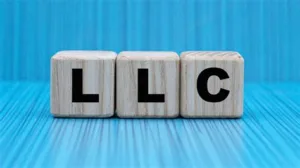Buying a larger apartment building can be one of the most rewarding steps in your investment journey. The returns can be strong, cash flow steady, and the potential for appreciation substantial. But the bigger the property, the more complex the process becomes.
Due diligence is where you uncover the truth about what you’re buying. It’s also where many investors make costly mistakes by not digging deeply enough. A quick building tour and a glance at the leases might work out for a small duplex, but larger properties require a much closer look.
Here are five essential areas to pay attention to when completing due diligence on a large apartment building.
1. Review the Paper Trail
Start with the numbers and documentation. This is where most of the story is told.
Begin by reviewing every lease and comparing the details to what the seller has represented. Then, look at the rent collection ledger to see whether tenants are actually paying what the leases say they should. It’s not uncommon for an unethical owner to downplay late or missing rent payments, so the ledger is your best way to confirm accuracy.
While you’re reviewing the financials, ask for the seller’s tax returns or Schedule E for the property. Tax documents typically provide a more reliable view of performance than any spreadsheet provided by the seller. They show what income and expenses were actually reported to the IRS, and that’s usually the clearest picture of reality.
The key is consistency. Every number – from rent to expenses – should align with documentation. If something doesn’t match, ask questions until you find the truth.
2. Examine the Building’s Physical Systems
Once the paperwork checks out, shift your attention to the building itself. Larger properties have more components, which means more opportunities for hidden issues.
A general property inspection is important, but go further than that. One of the most overlooked parts of a building inspection is the sewer line. In many cases, the pipe that runs from the property to the street belongs to the owner, not the municipality. Over time, tree roots, collapsed sections, or leaks can cause serious problems. Have the line scoped by a professional before you close.
Additionally, it’s important to inspect mechanical systems, roofs, and electrical panels carefully. Knowing the condition of these systems gives you leverage in negotiations and helps prevent expensive surprises later. Due diligence at this stage is about uncovering potential costs before they become yours.
3. Verify Code Compliance and Unit Legality
Municipal codes can vary widely, and it’s your responsibility as the buyer to make sure the property meets all local requirements.
In many areas, rental properties must pass an inspection before ownership can transfer. If that’s the case, the process will happen automatically as part of the sale. But if your municipality doesn’t require it, don’t assume everything is fine. Contact the local code office and request a voluntary inspection.
It’s also important to confirm that every unit in the building is legal. If the property is advertised as having twenty units, make sure all twenty are officially recognized by the municipality. Occasionally, owners add units over time without proper approvals, and those illegal conversions can create serious issues for new buyers.
A simple call to the code office and a review of property records can save you from future headaches and compliance fines.
4. Conduct an Environmental Review
Environmental risks don’t always stand out. Even something that you would think should be clean, like a nice apartment building, can carry unseen liabilities.
Perform at least a basic environmental review, often called a desktop assessment. This looks at the historical use of the property and the surrounding properties. Banks typically require this step when issuing a commercial loan, but it’s smart to do so no matter how you’re paying for the property.
For example, a neighboring retail building may look harmless, but what if it was a gas station thirty years ago? Underground fuel tanks could have leaked, contaminating soil or groundwater that extends beneath your building. These problems are rare, but can be extremely costly to resolve.
An environmental check ensures you’re not inheriting someone else’s problems and gives both you and your lender confidence in the property’s safety.
5. Evaluate the Insurance Situation
Insurance can make or break your operating budget, especially in today’s market where premiums are rising.
Before closing, get quotes from multiple providers, including the seller’s current carrier. It’s common for new buyers to discover that their insurance costs are far higher than what the seller pays. That happens because existing owners often have long-term policies with favorable rates, while new policies are priced at today’s higher levels.
Confirm that the coverage accurately reflects the property’s replacement value and risk profile. If possible, use the current insurer to get a baseline quote. They already know the building and may offer continuity pricing that helps to lower costs.
Even though insurance feels like a small detail, it can have a major impact on your return. It’s better to learn about premium increases before closing than after your first bill arrives.
Final Thoughts
Buying an apartment building requires more than checking boxes. It’s about verifying every piece of the puzzle – financial, physical, legal, environmental, and operational. Each step adds a layer of protection and helps you close the deal with confidence.
Many investors we work with appreciate our clear guidance on a productive due diligence process that helps them to avoid surprises and strengthen negotiations. If you are planning to acquire an apartment building in Pennsylvania or Maryland, contact us to discuss how to evaluate potential properties effectively and position your investment for long-term success.





